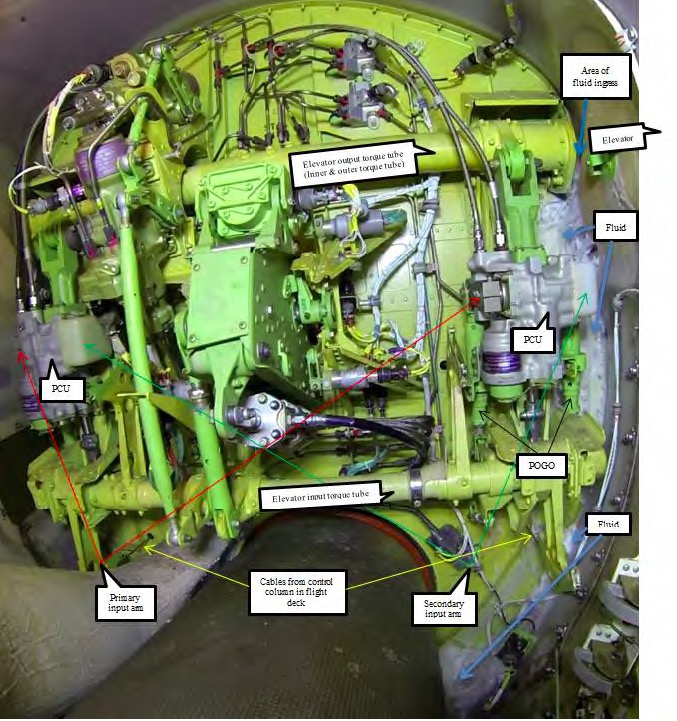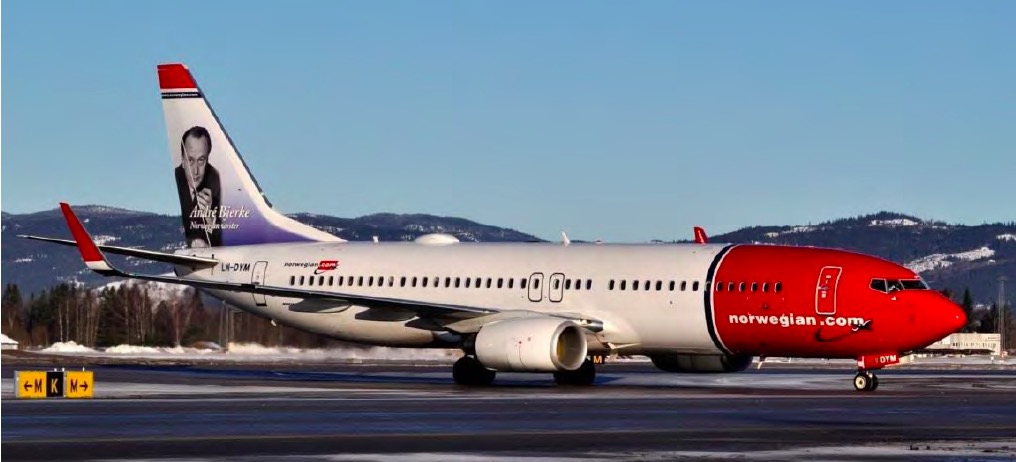
Norvegian Air Shuttle flight NAX5630 – Boeing B737-800 (LN-DYM)
During approach to Kittilä (EFKT) in Finland on 26 December 2012, LN-DYM, a Boeing 737-800 NG on Norwegian Air Shuttle flight NAX5630 from Helsinki airport (EFHK), came close to stalling.
The outcome of a stall would most likely have been catastrophic, primarily because the elevator system at that time did not function normally. The elevator system worked only at a ratio of 1:250.
De-icing was carried out prior to departure in order to remove about 25 cm of snow that had settled on the aircraft. The departure and flight en route to the destination were normal. During the approach to Kittilä, Norwegian Air Shuttle flight NAX5630 was established on the localizer at 4 421 ft (AMSL) with flaps 5 configuration, and the autopilot as well as autothrottle were engaged.
As Norwegian Air Shuttle flight NAX5630 was in the process of intercepting the glide slope, the elevator trim started to pitch the nose up. This trim continued for 12 seconds.
At the same time, the aircraft started to unintentionally ascend while the autothrottle commanded full engine thrust. Both pilots eventually pushed the elevator control column with full force, but the aircraft’s nose continued to pitch up to an angle of +38.5° before slowly decreasing.
The aircraft’s speed dropped to 118 kt (Calibrated Airspeed, CAS) and the Angle of Attack (AOA) reached a maximum of approximately 25°. The aircraft was thus close to stalling. The aircraft’s autopilot was disengaged just after the aircraft’s nose angle was at its highest.
Control over the aircraft was slowly regained. A new approach was carried out without additional problems.
Due to the Christmas holiday, the aircraft had not flown since 23 December. Over the course of these three days, the aircraft had been outdoors in snow showers, relatively heavy wind and cold. About 25 cm of snow had settled on the aircraft.
The de-icing of Norwegian Air Shuttle flight NAX5630 started at 08:58 hours and close to 3 000 litres of de-icing fluid was used to remove snow and ice
AIBN’s investigation has uncovered that de-icing fluid had ingressed the tail section and frozen on three or four of the input cranks for the aircraft’s two elevator Power Control Units (PCUs) and thus prevented them from functioning as intended.
The investigation has documented that, even after the introduction of new de-icing procedures from Boeing, considerable amounts of fluid and humidity are entering the tail section (Tail Cone Compartment) during de-icing. AIBN questions whether this satisfies the certification requirements for the aircraft type.
AIBN believes there is a need for measures that prevent ice formation on the input cranks and thus reduce the risk of blocking normal elevator function on the Boeing 737 series.
The investigation has also uncovered a potential for improvement in relation to registration of inquiries received by the company’s center for maintenance management, and the fact that LN-DYM continued to operate after the incident.
Download Report


0 Comments